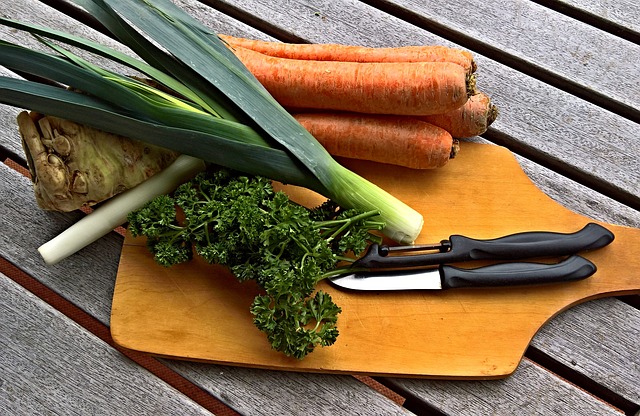 Last newsletter I wrote about taking out the trash. The trash I was talking about was the metabolic toxic waste our body is constantly producing just by being alive. Some of these wastes are so toxic that if our release of them is delayed even a few minutes, we will die. In this case I am talking about the left over carbon dioxide our cells produce when they make energy. One of the main functions of our lungs is to expel this toxin from our system every minute of every day.
Last newsletter I wrote about taking out the trash. The trash I was talking about was the metabolic toxic waste our body is constantly producing just by being alive. Some of these wastes are so toxic that if our release of them is delayed even a few minutes, we will die. In this case I am talking about the left over carbon dioxide our cells produce when they make energy. One of the main functions of our lungs is to expel this toxin from our system every minute of every day.
The last newsletter was focused on the process the liver goes through to eliminate waste from our body. It does this in cycles because the liver does so many things. It will always process the foods we have eaten before it will spend time eliminating wastes from our system. Through most of human history this was not a problem as food was not plentiful and it was normal to frequently have nothing to eat. This gave the liver plenty of time to switch over to cleanup mode to dump the wastes from the system. This is also why processing any food that was available was the top priority; we needed to get every calorie we could from whatever we ate.
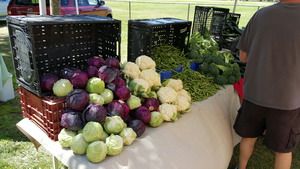
I introduced the idea that a complete absence of food was not necessary to still allow the liver to go into cleanup mode. As long as we eat slowly absorbed food sources that are the equivalent of under 500 calories a day, the liver would switch into clean-out mode. I suggested that making a nice vegetable stew and eating only that for a day would support our desire to “take out the trash.” I even suggested that this could be done weekly or even as often as every other day if a person had a lot of “trash” to clean out. Personally I have
 started eating a low calorie stew on Monday, Wednesday and Friday in order to clean myself out.
started eating a low calorie stew on Monday, Wednesday and Friday in order to clean myself out.
If you have any bloating or belly swelling issues, I was also suggesting that this stew could be made from only those vegetables that support healing the gut and reducing the numbers of unwanted bacteria in the gut. Here is the recipe I am using for myself.
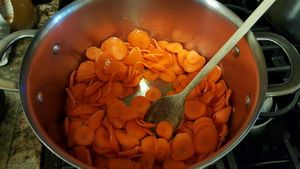 I start with a big kettle and put in a couple tablespoons of avocado oil. This will be used to begin cooking the densest vegetables. In my case I start
I start with a big kettle and put in a couple tablespoons of avocado oil. This will be used to begin cooking the densest vegetables. In my case I start  with a couple pounds of carrots sliced thinly. I simplify matters by using my salad shooter to slice up the carrots. Next I slice up a
with a couple pounds of carrots sliced thinly. I simplify matters by using my salad shooter to slice up the carrots. Next I slice up a 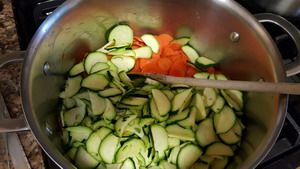 couple pounds of zucchini and a couple pounds of some other squash. All the while I am cooking this over a moderate to hot flame on the stove, stirring
couple pounds of zucchini and a couple pounds of some other squash. All the while I am cooking this over a moderate to hot flame on the stove, stirring 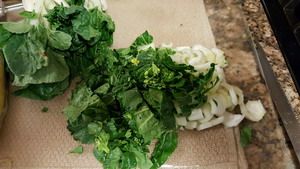 frequently. Lastly, for vegetables, I put in the lightest leafy vegetable: a couple pounds of bok choy. I might
frequently. Lastly, for vegetables, I put in the lightest leafy vegetable: a couple pounds of bok choy. I might 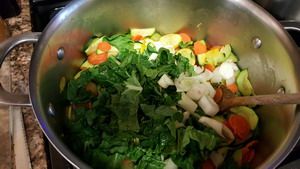 also add in spinach or any other leafy green vegetable at this point. As I cook and stir these vegetables, they become limp and partially cooked.
also add in spinach or any other leafy green vegetable at this point. As I cook and stir these vegetables, they become limp and partially cooked.
This next step is a big one for promoting health. I add in two cups of bone broth. One could use chicken stock or some other soup stock, but bone broth has so many amazing health benefits; this is an excellent place to use 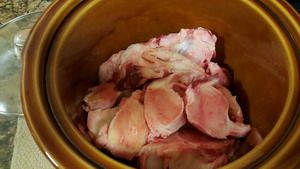 it. I hear you can now buy pre-made bone broth in the stores. I’m old school. I simmer my beef joint bones over night in a lot of water and a quarter cup of vinegar. When finished, the final broth looks like tan Jell-O. It is full of glucosamine and minerals and imparts a rich, full taste.
it. I hear you can now buy pre-made bone broth in the stores. I’m old school. I simmer my beef joint bones over night in a lot of water and a quarter cup of vinegar. When finished, the final broth looks like tan Jell-O. It is full of glucosamine and minerals and imparts a rich, full taste.
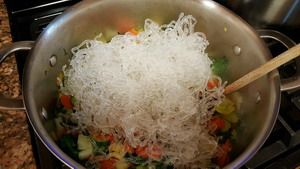
A fun addition to the soup I have put in the last couple times is a bag of Sea Tangles. These are a zero calorie noodles made from seaweed extract. Shirataki noodles would also work for this purpose. It just adds a noodle texture to the soup without adding any calories.

For a low calorie protein in the soup I add in about two cups of diced turkey breast. We don’t need a lot of protein – just a little to keep the stew feeling satisfying so we don’t feel hungry. If you want a vegetarian version of this soup you could ad in a cake of sprouted tofu that you have diced up.
Lately I have not been using much to spice the soup – a couple tablespoons of Fish Sauce, a tablespoon of Coconut aminos, and 2 teaspoons of Worcestershire Sauce. That’s it. I cover the kettle and let it all simmer for an hour – less if I want it crunchier. This recipe makes about 12 to 15 servings of soup – almost enough for us to both eat it three times a day for the three days of the week.
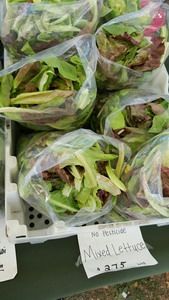
You could also use celery, green beans, red bell peppers, eggplant, cucumbers, olives, lettuce, ginger, Jicama, parsley, radish, turnips, tomatoes (not cherry), green onions, and other non-starchy squash. The general idea is about 8 pounds of vegetables to two cups of bone broth and two cups of low calorie meat/protein. No grains, legumes, or starchy vegetables are allowed. If you do not have any bloating issues then you can also use cabbage family vegetables like broccoli, kale, and Brussels sprouts as well as mushrooms, onions, and garlic.
 Feel free to spice things up with your favorite herbs like thyme, basil, rosemary, cumin, and so on. The possible combinations are endless. The key idea is a low fat, low carb, high fiber, low calorie stew that tastes good. Eat a cup of this stew for breakfast, lunch, and dinner and nothing else but water or tea/coffee for the day. That will give your liver 24 to 30 hours to be in detox cleanup mode before you go back to eating normally for at least a day. In certain medical situations this protocol may be used for many days at a time, but I would not recommend it unless you are being monitored by a doctor as it will slowly lower your metabolism and therefore your energy levels. The maximum I would use this is three days a week and never two days in a row. This way your energy stays up.
Feel free to spice things up with your favorite herbs like thyme, basil, rosemary, cumin, and so on. The possible combinations are endless. The key idea is a low fat, low carb, high fiber, low calorie stew that tastes good. Eat a cup of this stew for breakfast, lunch, and dinner and nothing else but water or tea/coffee for the day. That will give your liver 24 to 30 hours to be in detox cleanup mode before you go back to eating normally for at least a day. In certain medical situations this protocol may be used for many days at a time, but I would not recommend it unless you are being monitored by a doctor as it will slowly lower your metabolism and therefore your energy levels. The maximum I would use this is three days a week and never two days in a row. This way your energy stays up.
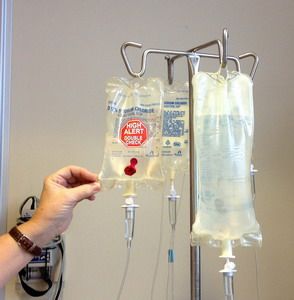
As I mentioned in the previous article, this method has been used with old folks to get them off most of their meds as well as with patients on chemo to increase the effectiveness of their chemo and decrease the nausea and other side effects from it. These studies are done in clinical settings with careful adjusting of meds during the process. So if you want to try this for that reason, please advise your doctor about what you are doing so you can carefully track what is happening with your medications. This presentation is aimed at the majority of us who are not on a bunch of meds, but want to clean up our bodies and feel healthier.
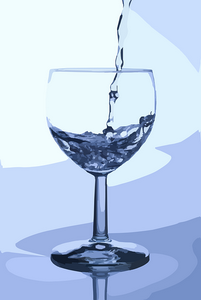 Just the toxins in our air, water, and even our “healthy” foods make this an advisable protocol for one day a week for everyone. Until I learned about being able to still switch into detox mode in the liver while still eating 500 calories a day, I used to water fast every Thursday night to Saturday morning. This makes that whole process much easier. The spiritual discipline may not be the same, but the physiological benefits are there.
Just the toxins in our air, water, and even our “healthy” foods make this an advisable protocol for one day a week for everyone. Until I learned about being able to still switch into detox mode in the liver while still eating 500 calories a day, I used to water fast every Thursday night to Saturday morning. This makes that whole process much easier. The spiritual discipline may not be the same, but the physiological benefits are there.
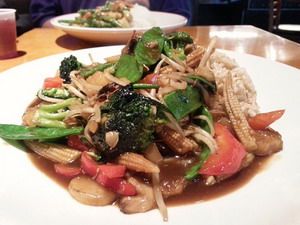
The same benefits can be gained by eating salads or stir-frys using this same principle – low fat, low carb, high fiber, low calorie. I prefer stew simply because it can be all made up for the week in advance. Salads and stir-frys require prep time at each meal. But if you have the time, by all means go ahead and mix things up with all three choices. The key is keep it under 500 calories for the day and keep it low carb and high fiber.
